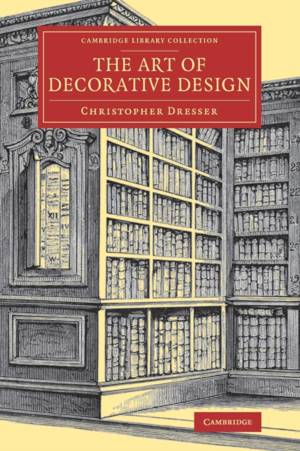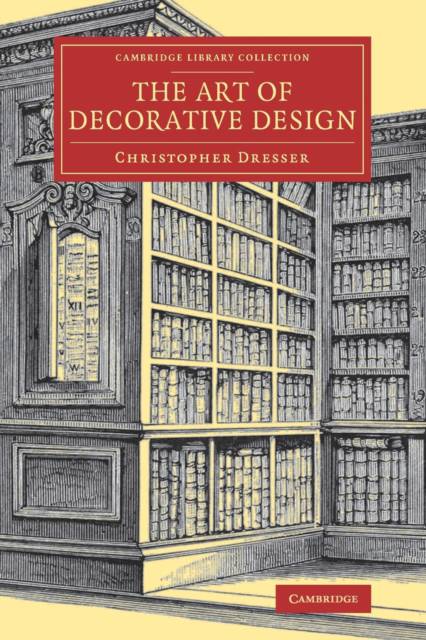
- Afhalen na 1 uur in een winkel met voorraad
- Gratis thuislevering in België vanaf € 30
- Ruim aanbod met 7 miljoen producten
- Afhalen na 1 uur in een winkel met voorraad
- Gratis thuislevering in België vanaf € 30
- Ruim aanbod met 7 miljoen producten
Zoeken
Omschrijving
Christopher Dresser (1834-1904) was arguably the first British industrial designer, and this 1862 work was his most influential book. He worked in a variety of media, from wallpaper and textile design to metalwork and ceramics, but was also a botanist, and his two professorial roles in fine and ornamental arts, at the South Kensington Museum and the Crystal Palace, included the teaching of botany. Unlike William Morris, Dresser believed that good design could and should be mass-produced by industrial methods, so that it became affordable to all classes. He describes here how decorative ornament should be used in design, the importance of taking inspiration from natural (usually plant) models, and issues of proportion, balance and gradation. The book, which encouraged the rising middle classes to decorate their homes themselves, is highly illustrated: the colour plates can be viewed online at www.cambridge.org/9781108080408, by clicking on the 'Resources' button.
Specificaties
Betrokkenen
- Auteur(s):
- Uitgeverij:
Inhoud
- Aantal bladzijden:
- 302
- Taal:
- Engels
- Reeks:
Eigenschappen
- Productcode (EAN):
- 9781108080408
- Verschijningsdatum:
- 4/05/2019
- Uitvoering:
- Paperback
- Formaat:
- Trade paperback (VS)
- Afmetingen:
- 152 mm x 229 mm
- Gewicht:
- 444 g

Alleen bij Standaard Boekhandel
+ 128 punten op je klantenkaart van Standaard Boekhandel
Beoordelingen
We publiceren alleen reviews die voldoen aan de voorwaarden voor reviews. Bekijk onze voorwaarden voor reviews.











